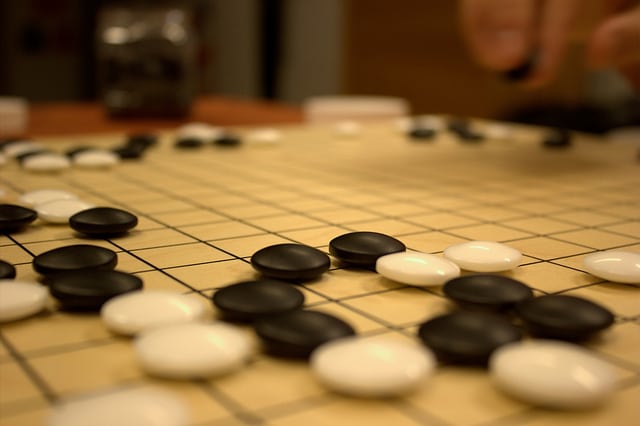
It is well known that the game of go (weiqi in Chinese), which was invented in China, is a game of positions, of gaining territory, rather than the movements of chess. Beijing is launching its technology strategy on a not dissimilar board, which has alarmed some in the West amid the country-cum-civilisation’s attempt to turn itself into superpower in the field, something it is already well on the way to doing. Indeed, there are various Chinese leaders who use military language –frequently inspired by the West– to describe their policy in this area. Some months ago, in his defence of the industrial strategy programme, launched in 2015, President Xi Jinping described science and technology as ‘the main battlefields of the economy’.
With an even more militaristic vocabulary, the chairman of a large Chinese technology company previously spoke of ‘regional juntas of commanders-in-chief’, ‘swarm tactics’, ‘heavy cavalries’, ‘redeployments to the battlefield frontlines’ –among other expressions– and had no hesitation in acknowledging that he took his inspiration from the organisational model used by the US Joint Chiefs of Staff.
This type of attitude has triggered reactions from both the US and the EU. The President of the American Information Technology and Innovation Foundation, Robert Atkinson, described the Chinese plan as an ‘aggressive by-hook-or-by-crook strategy’. The European Chamber of Commerce in China recently published a hard-hitting and detailed criticism of Chinese industrial strategy titled China Manufacturing 2025, with the revealing subtitle Putting Industrial Policy ahead of Market Forces. The Chinese goal is to create major national champions in 10 high-tech industrial sectors such as robotics, artificial intelligence, electric and self-driving cars, biomedicine, and computers (including potential quantum computers). Within a decade they are required to dominate their local markets, but be competitive on a global level, with quantified targets, and reduce dependence on key foreign technology by 40% by 2020.
China already has various such champions (such as Alibaba, Foxconn –which is Taiwanese but with a considerable presence on the mainland–, Tencent and SoftBank, to name just a few). The proposal is to underpin this trend by attracting knowledge too, with hiring incentives for technology experts who bring innovation or patents. China is pursuing an aggressive policy of purchasing the latter, as well as creating its own, as Huawei is doing. And all these large companies, some of them online platforms, have a close relationship with political power.
Although China currently lags behind in robotics and automation it is catching up rapidly; with an ageing population stemming from the former single-child policy, and with rising labour costs, in the years ahead it is set to become the main market for installing machines that will replace and complement human work. It is a step towards smart manufacturing. Last summer, Chinese capital snapped up Kuka, the largest manufacturer of robots in Germany. But it caused alarm in Merkel’s government, which wants to study how to prevent capital from outside the EU being able to make off with companies that are strategic –and not only in the military sense– for Germany. In fact, the German Industrie 4.0 strategy served as inspiration for Made in China 2025.
The European Chamber of Commerce report warns about the implementation of ‘a carefully-orchestrated industrial strategy’ that includes tools such as subsidies, ongoing support for inefficient state enterprises, limiting foreign companies’ access to the market and acquisitions of EU and other countries’ companies backed by the Chinese state. European companies face ‘intense pressure to turn over advanced technology in exchange for near-term market access’. But this of course applies not only to European businesses. Recently Tencent (which has overtaken Alibaba in value) bought a 5% stake in Tesla, the American manufacturer of electric cars, among others.
The European criticism is constructive, with recommendations about how the Chinese authorities can better foster innovation by establishing the market as the decisive force in driving the Chinese economy. The Chinese leadership has not remained silent. They even described some of the suggestions contained in the Chamber of Commerce report as useful: Miao Wei, for instance, the Industry and Information Technology Minister, said that the engine behind Made in China 2025 is the market. He denied that China obliges foreign companies to hand over technology in exchange for market access, even though this is borne out by experience.
The military dimension also has a bearing. Indeed, it lay behind the initial Chinese push for innovation, although this tends to be an increasingly civilian affair. Now there is talk in China of ‘indigenous’ or local innovation and self-sufficiency (in a country that imports more in semi-conductors than in oil, despite having no reserves of the latter raw material). It seeks to absorb and reinvent foreign technologies. Those who said that China was not innovative are now less frequently heard. Be that as it may, the protectionist Donald Trump and the supposedly globalising Xi Jinping, in a world apparently turned upside down, seemed anxious at their recent meeting at Mar-a-Lago in Florida to avoid a trade war, with a plan to this end to be developed within 100 days. But the whole business goes much further. It is a global game of go in which technological superiority itself is at stake.


